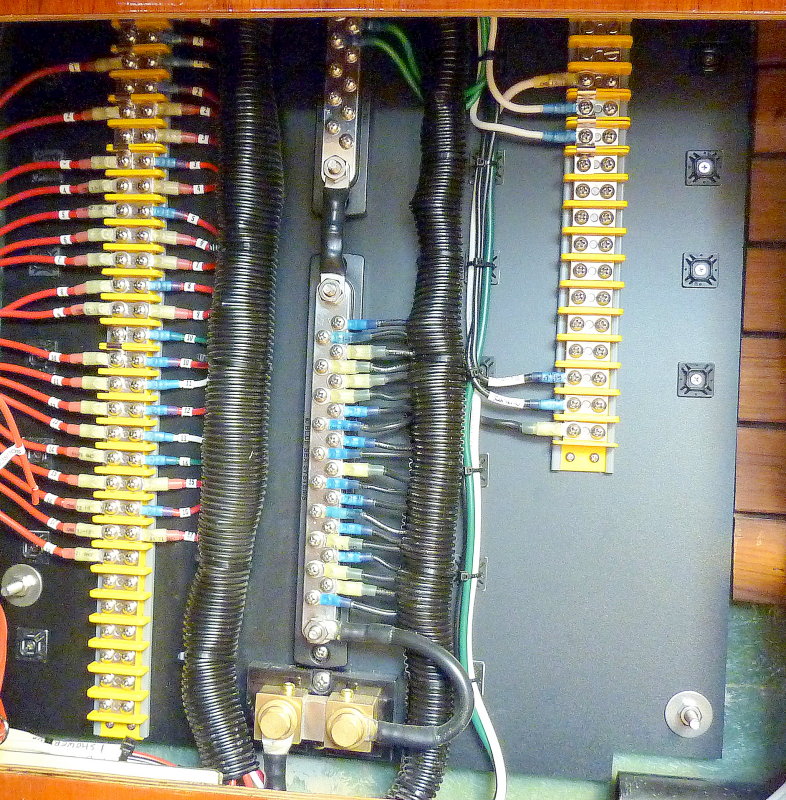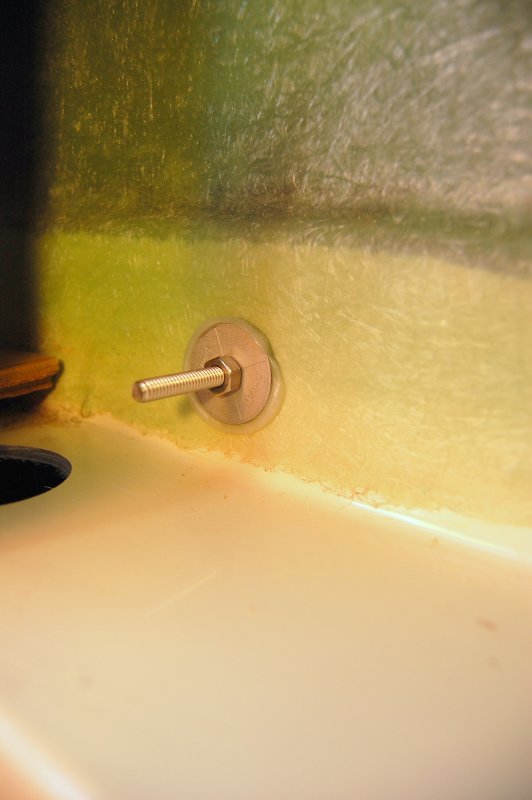Although using studs to make an adjustable mount is hardly a new idea (engines, street lights), I admit using threads in prelaminated FRP is an idea I stole from your seacock mounting procedure. It worked out very well in this application too.
http://sail-delmarva.blogspot.com/2011/05/solar-panels.html
Sure, I could have drilled, filled and re-drilled, and worked something out with spacers. This was fast, slick, and very solid. Zero risk of core leakage. Easy to remove for wiring and troubleshooting.
I imagine there must be other applications for this sort of surface mount, where surfaces are irregular and loads not too high. Also places where through-bolting is not practical. Needless to say, good surface prep and adequate area are need to insure adequate secondary bond.
http://sail-delmarva.blogspot.com/2011/05/solar-panels.html
Sure, I could have drilled, filled and re-drilled, and worked something out with spacers. This was fast, slick, and very solid. Zero risk of core leakage. Easy to remove for wiring and troubleshooting.
I imagine there must be other applications for this sort of surface mount, where surfaces are irregular and loads not too high. Also places where through-bolting is not practical. Needless to say, good surface prep and adequate area are need to insure adequate secondary bond.



